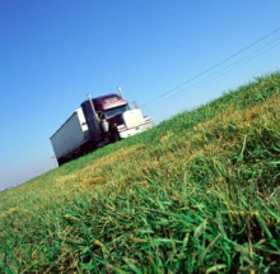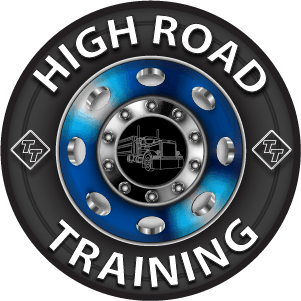How Do You Determine "safe Speed" For Going Downhill?
Topic 10482 | Page 1

This is going to get you many different opinions.
I'll say this the safe speed is whatever speed you know you can make it down safely at.
If that's 30mph so be it, if it's 20 fine as long as you make it down safely. Go as slow as you want if you're going to slow way down hit the 4 ways and cruise to the bottom.
A lot of folks on here use the saying you can down too slow as many times as you want you can only go to fast once.
Errol looks at David H. and says "There are no stupid questions, Dave. This is something you want to know, so you ask. Now I'll tell you what I know."
If you're rolling down a hill and need a "safe" speed consider this: how fast were you going up the hill? (Or imagine going up the hill - how fast world that be?) That's a place to start.
Sometimes there will be a sign that says "TRUCKS 30 MPH". That one's a no brainer.
Lastly, if your grandmother was riding with you, how fast would you be going when she says "Slow down, David! "
That 5mph thing goes like this: your truck will naturally want to accelerate. Brake & slow down to 5mph below the safe speed.
Let the truck accelerate back to said safe speed, rinse, repeat. You can leave the engine brake on all this time if you're using it.
Dm:
Dispatcher, Fleet Manager, Driver Manager
The primary person a driver communicates with at his/her company. A dispatcher can play many roles, depending on the company's structure. Dispatchers may assign freight, file requests for home time, relay messages between the driver and management, inform customer service of any delays, change appointment times, and report information to the load planners.David, that's an excellent question.
If you're hauling less than maybe 25,000 pounds you can go the posted truck speed limit if there is one, or start out maybe 10-15 mph below the regular posted speed limit. If you're hauling more than 25,000 pounds then you're probably going to want to go down about 10 mph below the posted truck speed limit if there is one or around 35 mph if there isn't one and then see where you stand according to the following:
On dry roads you should be at a speed where your Jake Brake by itself can pretty much do all of the work. If you're in the proper gear the Jake Brakes alone should hold you back. You might need to hold the pedal lightly for a few seconds here and there but not much. If the Jake won't hold you back very well then go down one more gear and see what it does.
On wet or slick roads you'll be using your Jake Brake very little, if any. In that case you want to go a speed where you're using your foot brake about half the time or less. Use the speeds I mentioned above as your safe speed. In this case let's pretend there is no posted truck speed limit and you're carrying 40,000 pounds. Start by using a safe speed of 35 mph. You'll slow the truck down to 30 mph, release the brake, and let it roll up to 35 mph where you'll smoothly apply the brake again until you get down to 30 mph. You'll keep repeating that pattern between 30 mph and 35 mph.
Now this is where it's kind of a judgment call. Without the Jake Brake you only want to be using the foot brake maybe half the time as I had mentioned. If you find you're really having to get on the brakes pretty hard for about 8 seconds to get down to 30 mph but the truck accelerates up to 35 mph in about 5 seconds then you're probably one gear too high. Drop a gear, drop your safe speed by 5 mph, and see how it behaves.
As far as which gear to be in, you want the RPM's to run up to the governed limit when you're at your safe speed. So if your safe speed is 35 and your rpm limit is 1,700 rpm then you want a gear that will put you around 1700 rpm at 35 mph.
Watch closely for posted truck speed limits and think of those as life and death limits, because they very well may be. And if you're heavy, like carrying more than 25,000 pounds, you should be the slowest truck on the hill. If you're heavy and you're going faster than any of the trucks you can see around you then slow down to their speed. They may know something about that hill that you don't, and it's likely a tight curve further down the hill. It certainly wouldn't hurt to pull off before heading down an unfamiliar hill if you can do so safely and have a look at the layout of the hill on Google maps. Take a look to see what kind of curves you'll be dealing with and where they are on the hill. You'd be surprised how many hills have some of their tightest curves near the bottom so don't get lulled into thinking the hill is safe by the way it's laid out in the beginning.
HOS:
Hours Of Service
HOS refers to the logbook hours of service regulations.OWI:
Operating While Intoxicated

When you are going up s hill, and a sign says "BRAKE CHECK," with a place for trucks to pull into, you already know that it is going to be a SLOW RIDE going down.
Dave

Thanks for all the great responses. Brett, I really liked your detailed answer. You are all saying what I was thinking. There is no formula per se for "safe speed." Every situation is different based on road and weather conditions and your load. Like everything else, it will take some experience!
Hey sorry for the confusion folks. There were some posts on this thread I deleted but others had already noticed them and started responding so it made a mess out of it for a bit there. My bad.

I was taught to go downhill in one gear lower than it took to go uphill. So if you climbed it in 6th, you descend in 5th. This formula takes into account load weight and is a good starting point for a new driver.
Phil

Also, remember, (as a general rule) never try and shift while going down hill. You might NOT get it back in gear.
Dave

I was taught to go downhill in one gear lower than it took to go uphill. So if you climbed it in 6th, you descend in 5th. This formula takes into account load weight and is a good starting point for a new driver.
Phil
I always had a problem with this one because some are only grades on one side, there are a lot like this I sort of generalize this farther by remember what you did on an equal grad with roughly the same weight ie. If you went down a 6% last week with 30k in the box remember roughly what speed you went. The first mountains you go through you should be with a trainer who will guide you down. Eventually you will be able to feel it out , and be more comfortable with your guesses.
Also when in doubt drop a gear, or 2 or 3 it's way easier to go up a gear than down, or to crawl down a long hill than try to slow her down half way down.
New Reply:
New! Check out our help videos for a better understanding of our forum features

















Preview:








 TT On Facebook
TT On Facebook
Okay, I've been studying the High Road course and reading about proper braking for downhill. The manual always talks about braking to 5 mph below your "safe speed," releasing until you attain your "safe speed" and then repeating the process. BUT I have yet to read WHAT IS A SAFE SPEED! There is nothing posted on the road except for signs warning of steep downgrades or something like that.
I also know that factors like the percent of the downhill grade, how long in distance the downhill grade is, and the weight of the tractor, trailer, and load would all be taken into consideration, but that still doesn't tell me how you actually determine what the safe speed is. Is that just something you learn by experience and is a seat of the pants kind of thing?? Is it simply the feeling of "this feels like a safe speed" and maintaining it?
I hope this isn't TOO stupid of a question....
CDL:
Commercial Driver's License (CDL)
A CDL is required to drive any of the following vehicles: